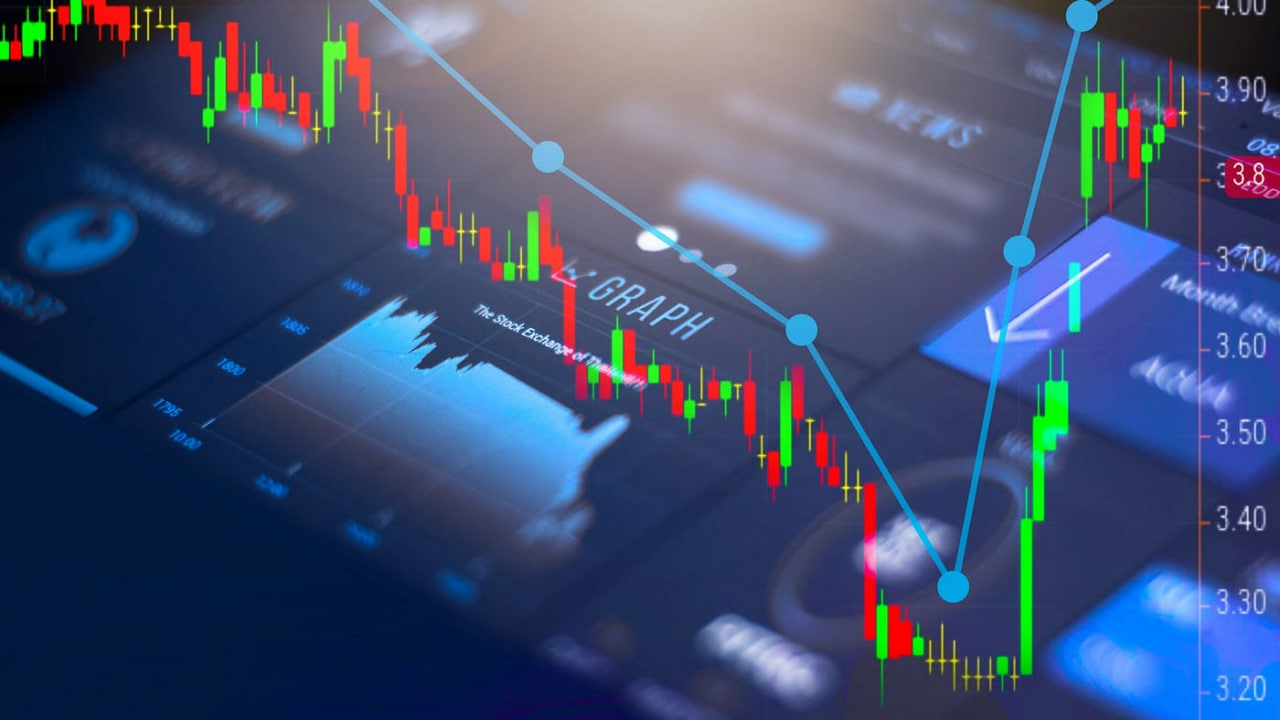Unlock the Global Market: Navigating Daily Financial Fluctuations
Meta Description: Master the art of financial market analysis with expert insights into Nasdaq, FTSE China A50, NYMEX Crude Oil, and the US Dollar Index. Learn how to interpret daily market movements and make informed investment decisions. #Nasdaq #FTSEChinaA50 #NYMEXCrudeOil #USDollarIndex #GlobalMarkets #FinancialMarkets #InvestmentStrategies
This isn't your grandpappy's stock market report, folks! Forget dry, lifeless data dumps. We're diving headfirst into the thrilling, often chaotic, world of global finance, armed with insights that go beyond the surface numbers. Think of this as your backstage pass to understanding the daily dance of the Nasdaq, the pulse of the FTSE China A50, the ebb and flow of NYMEX crude, and the mighty sway of the US dollar. We're peeling back the layers to reveal the why behind the daily fluctuations, equipping you with the knowledge to navigate this complex landscape with confidence. Prepare to ditch the guesswork and embrace a data-driven approach to understanding global market dynamics. Whether you're a seasoned investor looking to sharpen your skills or a curious newbie taking your first steps into the world of finance, this deep dive is designed to empower you. We'll unravel the intricate relationships between these key indices, exploring the geopolitical factors, economic indicators, and market sentiment that drive daily changes. Get ready for a journey that's as enlightening as it is engaging – let's unlock the global market together!
Nasdaq: A Deep Dive into the Tech Titan
The Nasdaq Composite, often seen as a barometer of the global tech sector, experienced a modest uptick on October 17th, closing at 18367.08, representing a 0.28% increase or 51.49 points. This seemingly small movement, however, speaks volumes about the underlying complexities of the market. A cursory glance at the headline might suggest calm waters, but beneath the surface, a complex interplay of factors was at play.
What fueled this slight climb? Several contributing factors likely played a role. For example, positive earnings reports from key tech giants could have provided a boost in investor confidence. Conversely, any negative news concerning regulatory hurdles or geopolitical anxieties might have tempered the gains. Remember, the market's a fickle beast, reacting to a myriad of stimuli simultaneously.
Analyzing the Nasdaq requires a multi-faceted approach. We need to consider macroeconomic indicators, such as inflation rates and interest rate decisions by the Federal Reserve. These factors directly influence investors' risk appetite and allocation strategies. Geopolitical stability also plays a crucial part; any major international event can trigger significant market volatility.
Furthermore, understanding sector-specific trends within the Nasdaq is crucial. For instance, a surge in demand for artificial intelligence (AI) technologies might buoy the performance of related companies, while a slowdown in the cloud computing market could impact others negatively. It's a dynamic ecosystem where individual company performance significantly influences the overall index. This isn't just about numbers; it's about understanding the intricate stories behind those numbers.
FTSE China A50: Gauging the Dragon's Pulse
The FTSE China A50 index future saw a more pronounced increase on October 17th, jumping 0.71% or 94 points to close at 13375. This upward trend suggests a positive outlook on the Chinese economy, but again, a deeper analysis is needed to fully grasp the situation. China's economy is a complex beast, influenced by factors ranging from government policies and infrastructure investments to global trade dynamics and domestic consumer spending.
Recent economic data releases from China will invariably impact the A50. Positive GDP growth figures, for instance, usually translate to investor optimism and higher index values. Conversely, indicators pointing towards slower-than-expected growth can trigger a market downturn. Furthermore, any shifts in government regulations, particularly those affecting key sectors such as technology or real estate, could significantly influence investor sentiment.
Remember, the A50 is not immune to global events. Global trade tensions and shifts in international relations can have a ripple effect, impacting Chinese exports and overall economic performance. Therefore, staying abreast of global headlines is just as important as monitoring domestic Chinese economic indicators. A holistic perspective is key to successful analysis.
NYMEX Crude Oil: Riding the Energy Rollercoaster
The price of NYMEX crude oil experienced a minor increase on October 17th, rising 0.18% or 0.13 points to settle at 70.71. This marginal change reflects the inherent volatility of the energy market, constantly influenced by global supply and demand dynamics, geopolitical events, and OPEC’s production decisions. The oil market is a highly sensitive beast, reacting instantly to news from around the world.
OPEC’s decisions regarding production quotas often exert significant influence. Any adjustments in production levels can dramatically affect the global supply, leading to price fluctuations. Geopolitical instability in oil-producing regions can also create supply disruptions and price spikes. Moreover, global economic growth and demand for energy play a crucial role in shaping oil prices. A robust global economy typically translates to higher energy demand and subsequently higher oil prices.
Therefore, analyzing NYMEX crude requires a keen understanding of geopolitical factors, economic indicators, and the intricate dynamics of the global energy market. Keeping a pulse on these interconnected factors is critical for making informed decisions.
US Dollar Index: The Greenback's Global Influence
The US Dollar Index (USDX) concluded October 17th with a 0.3% increase, closing at 103.52. The USDX's movement often reflects the relative strength of the US economy compared to other major global economies. A stronger dollar usually indicates increased investor confidence in the US economy and its financial stability.
However, influencing factors are numerous and complex. Interest rate decisions by the Federal Reserve significantly impact the USDX. Higher interest rates, for example, typically attract foreign investment, boosting the value of the dollar. Inflation rates also play a crucial role; high inflation often weakens the dollar's purchasing power.
Global economic events and geopolitical tensions can also affect the USDX. Times of global uncertainty often lead to a "flight to safety," pushing investors toward the perceived safety of the USD, strengthening its value. Conversely, periods of global economic expansion can weaken the dollar as investors seek higher returns in other markets. The USDX is never stagnant; it's a dynamic indicator reflecting the global economic landscape.
Frequently Asked Questions (FAQ)
Q1: How can I interpret these daily market fluctuations effectively?
A1: Effective interpretation requires a holistic approach. Consider macroeconomic factors (inflation, interest rates), geopolitical events, specific sector trends, and individual company performance. Don't just look at the numbers; understand the narrative behind them.
Q2: Are these daily changes indicative of long-term trends?
A2: Not necessarily. Daily fluctuations are often short-term, influenced by various temporary factors. Long-term investment strategies should focus on fundamental analysis and long-term economic outlook, not daily market noise.
Q3: What resources can I use to stay updated on these markets?
A3: Reliable financial news sources, economic data providers, and reputable investment platforms offer real-time data and analysis. However, always critically evaluate the information you consume.
Q4: What risks are involved in investing based on daily market reports?
A4: Daily market reports are snapshots, not crystal balls. Investing based solely on daily movements is risky, potentially leading to impulsive and ill-informed decisions.
Q5: Is it possible to predict future market movements accurately?
A5: No, predicting the market with 100% accuracy is impossible. Market movements are too complex and depend on too many unpredictable factors. Focus on risk management and diversification.
Q6: Where can I find more in-depth information on these indices?
A6: Consult financial websites specializing in market analysis, economic research papers, and reputable investment books. The more you learn, the better equipped you’ll be.
Conclusion: Charting Your Course in the Global Market
Navigating the world of global finance can feel like traversing a minefield, but armed with the right knowledge and tools, you can confidently chart your path. Understanding the interplay between the Nasdaq, FTSE China A50, NYMEX crude oil, and the US Dollar Index is crucial for making informed investment decisions. Remember, consistent learning, critical analysis, and a long-term perspective are your best allies in this dynamic and ever-evolving landscape. Don't just react to the market; understand it. The journey to financial literacy is ongoing, but with dedication and the right guidance, you can unlock the potential of the global market.



